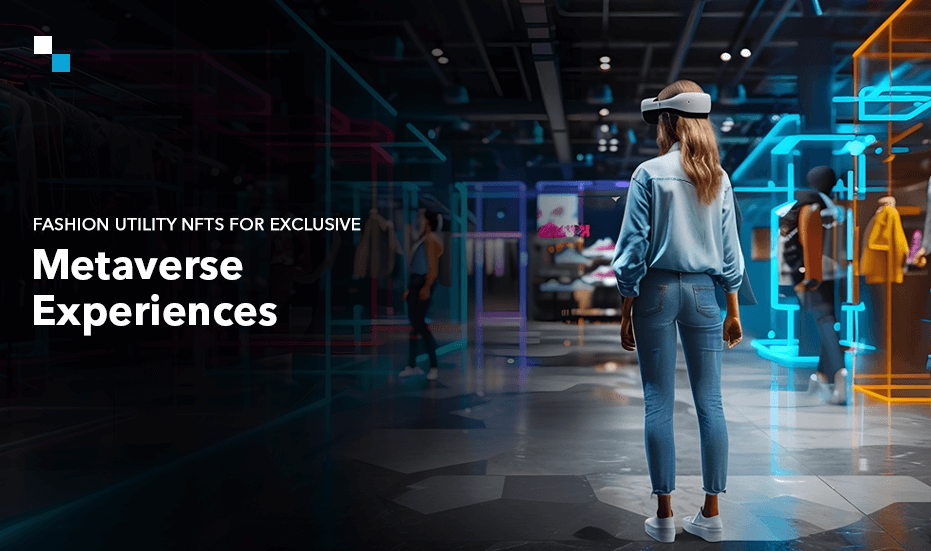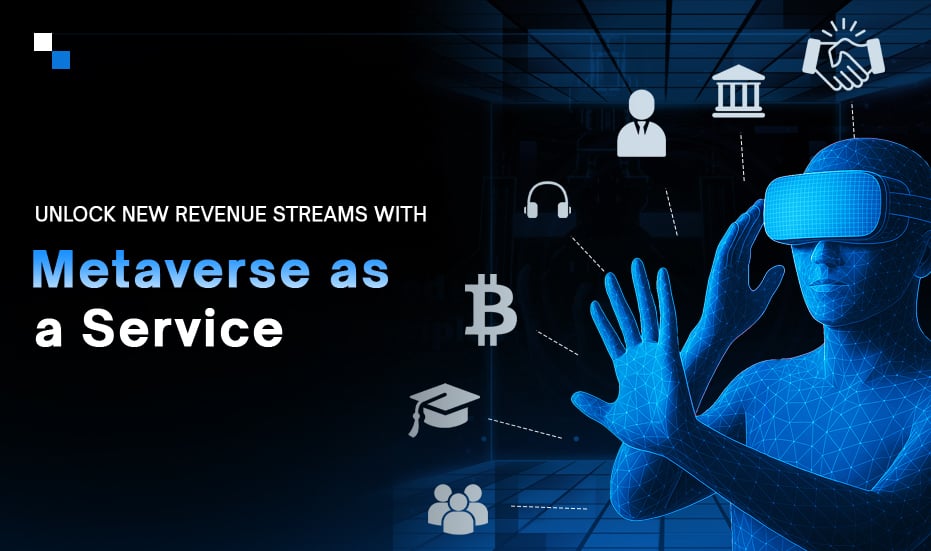
How to Create a W-Coin Tap-to-Earn Telegram Game in 2 Weeks?
September 23, 2024
A Dive into Asset Tokenization on Blockchain
September 24, 2024“Non-fungible tokens are expected to reach $214.57 billion by 2030, with a growth rate of 34.2%, creating exciting opportunities luxury fashion industry”
The Metaverse in Fashion Industry enables brands to connect with their customers and drive sales through virtual flagship stores, enhancing digital identity and self-expression.
A recent Vogue Business Index survey found that 17% of global brands, including Dolce & Gabbana and Gucci, are already diving into NFTs.
In the publication “Luxury in the Metaverse,” Morgan Stanley highlights that the luxury NFT market is projected to grow to $25 billion.
This is just the beginning, and the growth potential is limitless. But the real question is how your business can generate growth through Utility NFTs. Let’s find out!
Understanding Fashion Utility NFTs: Transforming the Shopping Experience for Customers
Fashion Utility NFTs are a unique type of Non-Fungile Tokens that offer real-world benefits to their owners, which go beyond just digital ownership. They represent items and experiences in Fashion Store In Metaverse having tangible utilities and perks. For example: 3D Clothes Design, Wearables, or Accessories.
With stores closed and fashion shows on hold after the pandemic, many luxury brands turned to utility NFTs to connect with customers and create virtual experiences that mimicked the excitement of in-person events by:
- Providing access to exclusive events,limited-edition physical products, or VIP experiences when redeemed.
- Granting special membership status to attend virtual fashion shows with added benefits.
- Customizing the digital item’s design to create a unique expression of personality.
- Offering royalties membership cards, giving holders special status and benefits like discounts, early access to drops, and more secondary market sales.
Excitement over Metaverse in the Fashion Industry peaked when the first-ever Metaverse Fashion Week took place in Decentraland. The event saw the participation of more than 70 brands, including Tommy Hilfiger, Dolce & Gabbana, and Karl Lagerfeld, which showed off their collections on virtual catwalks along with well-known digital designers.
Many more presented NFT wearables, enabling attendees to dress up their avatars in style. For example, Tommy Hilfiger created digital versions of its most classic designs, including logo hoodies and varsity jackets.
Driving Forces Behind Fashion Utility NFTs
- Innovative Revenue Streams
The market for Fashion Utility NFTs is a goldmine for producers and artists looking to take advantage of new business opportunities. Brands may use fractional ownership, dynamic secondary market transactions, direct-to-consumer sales, and blockchain technology by tokenizing digital fashion assets. This strategy opens the door for exclusive limited editions and the monetization of digital designs and collaborations, opening up exciting new avenues for sales innovation and brand profitability outside of traditional retail channels.
- Authenticity and Digital Ownership
As the need for digital ownership and authenticity grows, Fashion Utility NFTs are rising to the occasion. Think of these tokens as a distinct, authenticated means of proving ownership of virtual apparel, accessories, and memorabilia. With consumers looking for unique virtual experiences more and more, Fashion Utility NFTs enable brands to create authenticity and scarcity in the digital space, generating curiosity and adding value.
How To Generate Revenue From Fashion Utility NFTs?
- Secondary Sales Royalties: Earn a percentage from every resale transaction through smart contracts embedded in the NFT.
- Tokenized Limited Editions: Tokenize exclusive items to create scarcity and drive demand among collectors.
- Exclusive Drops: Launch limited-edition NFT collections that create urgency among buyers.
- Collaborations with Artists: Partner with digital artists to create unique pieces that appeal to both art collectors and fashion enthusiasts.
Did You Know?
The Asia Pacific region is leading the charge in the fashion utility NFT market, driven by its strong digital infrastructure and innovative fashion landscape, with countries like China and South Korea at the forefront of this trend.

Exciting Ways Brands Capitalize On Utility Non-Fungible Tokens
Utility NFTs changing the definition of how customers engage, own, and authenticate their products. Here is how your brand can capitalize on utility NFT use cases:
1. Access and Experiences
Use Utility tokens to offer holders access to unique events, products, or experiences, not available to common people. This will make your NFT valuable and infuse a sense of belonging among the holders.
Use Case: Gucci Aria Collection
Gucci released the Aria NFT collection, which comprises a short film commemorating its centenary. This sale offered exclusive access to a virtual experience that celebrated the brand’s heritage. The money collected was later donated to UNICEF USA.
2. Membership and Loyalty Programs
Introduce Utility Tokens as membership cards for potential customers. The cards may hold some status within the brand’s ecosystem like providing access to exclusive content, discounts, and events.
Use Case: Flyfish Club
Flyfish Club uses NFT membership tokens to grant access to their exclusive restaurant and event space in New York City. By using these tokens, customers can have private culinary experiences and events that they would not otherwise gain access to, boosting loyalty and community engagement.
3. Redeemable Benefits
Offer redeemable benefits in terms of Utility tokens that allow the holder to exchange his or her digital assets for physical products or experiences. This brings in the idea of digital ownership intertwined with real reward delivery.
Use Case: Nike Cryptokicks
Nike’s RTFKT studio offers “Cryptokicks,” utility NFTs representing unique digital sneakers. Some Cryptokicks allow owners to redeem a physical version of the sneaker at a discounted rate or gain access to exclusive merchandise linked to the design. This amplifies customer engagement, adding value to the ownership experience.
4. Gamification
Use Gamify Utility NFTs to raise participation among users with challenges or interactive games. This enhances user interaction with the brand, as they spend time engaging with it.
Use Case: Louis Vuitton’s NFT Game
Louis Vuitton commemorated its bicentennial by launching “Louis: The Game,” an NFT platform-based mobile game. As one plays the game, they collect NFTs. Each one of these collectibles has a unique connection to the brand’s history. It educates entertainingly and engages users with the brand in a fun manner, and collecting exclusive digital assets.
5. Authenticity and Provenance
The Metaverse in Fashion Industry can help to resolve the oft-persistent problem of authenticity and provenance with Utility Tokens. blockchain technology to create NFT-backed authentic certificates. Built strong connections with your customer, boost their confidence, and curb counterfeiting in the luxury market.
Use Case: LVMH’s Aura Platform
LVMH has established the Aura blockchain platform through which its clients can verify products as authentic or not through NFTs. Every luxury item is issued with an NFT that acts like a certificate of authenticity and allows buyers to track origins and history related to their respective purchases.
6. Digital Fashion Collections
Open up the new possibility for customers to dress digital avatars in unique, virtual wear with new collections designed exclusively for digital environments.
Use Case: RTFKT Studios’ Digital Sneakers
RTFKT Studios is working on a utility NFT of a limited-edition digital sneaker. Buyers can wear them in virtual settings, like gaming communities or social media pages, making a sartorial statement without the need for physical manufacturing.
7. Sustainability Programs
Prevent the overproduction and waste that comes with traditional manufacturing processes with Utility Tokens.
Use Case: Levi’s 501 ^{®} NFT Campaign
Levi’s launched the 501 ^{®} Original jeans with NFT, providing a lifetime guarantee on repairs at its Paris store. This campaign goes for durability and sustainability while pushing a good consumer to invest in quality products instead of fast fashion. The campaign also featured trading cards in the form of NFTs, which depicted Naomi Osaka as a limited edition, bringing the physical world and digital collectibles into one place.
These are some ways how you can take benefit of utility tokens and change the way customers express themselves. Share experiences and benefits tied directly to the purchase of the goods. More and more creativity applied through utility NFTs in fashion is expected to advance in the future.
Want to Create Your Own Utility NFT?
Here’s How to Get Started!
1. Identify Your Audience
Who are your customers? Get to know them! Understand what they value in digital experiences. Consider running polls or surveys to discover their preferences. What excites them about Metaverse Fashion Platform?
2. Develop Unique Offerings
Create exclusive digital treasures that speak to your audience! Think about unique virtual wearables, VIP access to events, or special experiences that reflect your brand’s identity. What would make your customers say, “I need that!”?
3. Choose the Right Blockchain
Select the best blockchain for your needs! Research platforms that align with your brand goals—consider transaction fees, scalability, and user experience. Which one feels like the perfect fit for your vision?
4. Educate Consumers
Empower your audience with knowledge! Share clear, engaging content about how your NFTs work and the benefits they offer. Use videos, infographics, or interactive Q&A sessions to make it fun and informative.
5. Engage Through Social Media
Get the buzz going! Use platforms like Instagram and Twitter to announce your NFT drops. Share sneak peeks, behind-the-scenes content, and engage in real-time conversations with your audience. How will you make them feel part of your journey?

Creating Your Fashion Utility NFT: A Step-by-Step Guide
Step 1: Conceptualize Your Design
Let your creativity shine! Brainstorm unique digital items or experiences that embody your brand’s essence. What story do you want to tell with your NFT?
Step 2: Select a Marketplace
Choose the right stage for your launch! Pick an NFT marketplace (like OpenSea or Rarible) where you’ll mint your creation. Which platform feels like the best match for your style?
Step 3: Mint Your NFT
Bring your idea to life! Follow the marketplace guidelines to mint your NFT—upload your design and set parameters like royalties. Are you ready to make it official?
Step 4: Promote Your NFT
Spread the word! Use social media and email marketing to create excitement around your NFT drop. Consider countdowns and teasers to keep your audience on their toes. What strategies will capture their attention?
Step 5: Engage with Buyers
Keep the connection going! After the sale, stay in touch with your buyers. Share updates on future drops and exclusive content. How can you ensure they feel valued and part of your community?
How Antier Can Help?
Antier, a pioneered Metaverse Development Company can help you to move their Fashion Store In Metaverse and overcome the complexities of creating and implementing fashion utility NFTs.
With expertise in blockchain technology, smart contracts, and marketplace development, Antier can help to build cusomized Metaverse Fashion Platform for brands looking to enter this immersive space.
Create a virtual runway where your 3D Clothes Design comes to life in the Metaverse.



